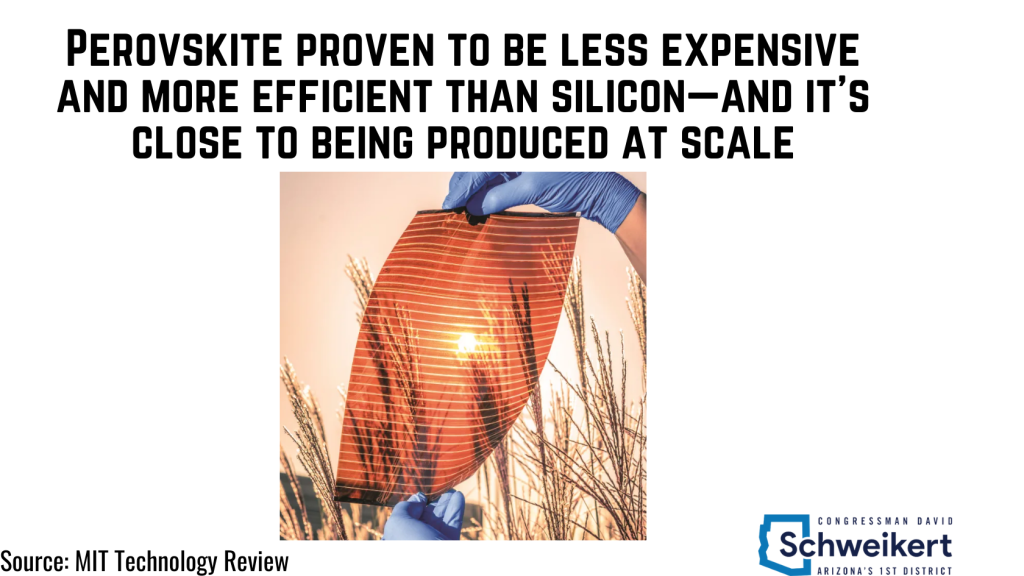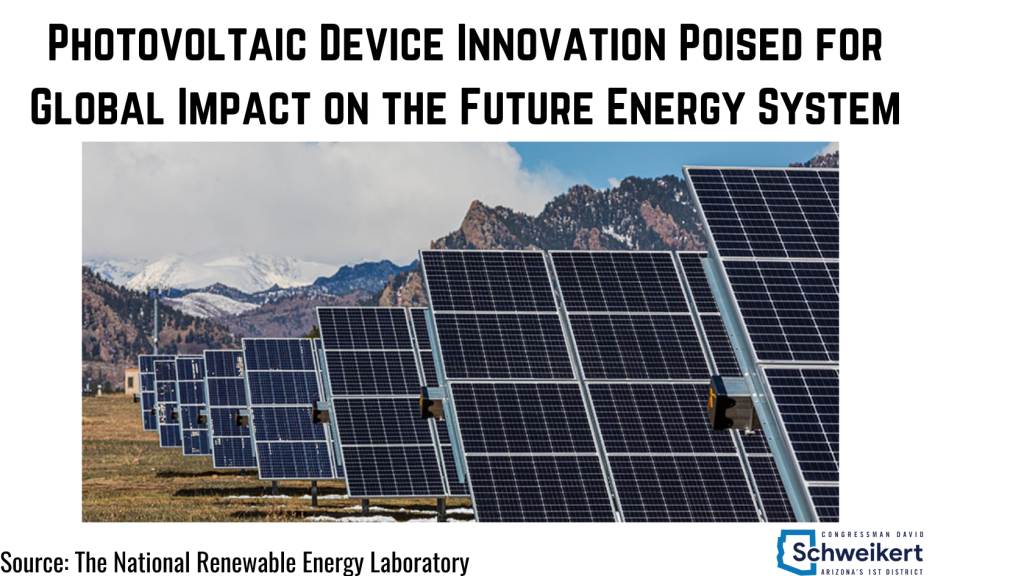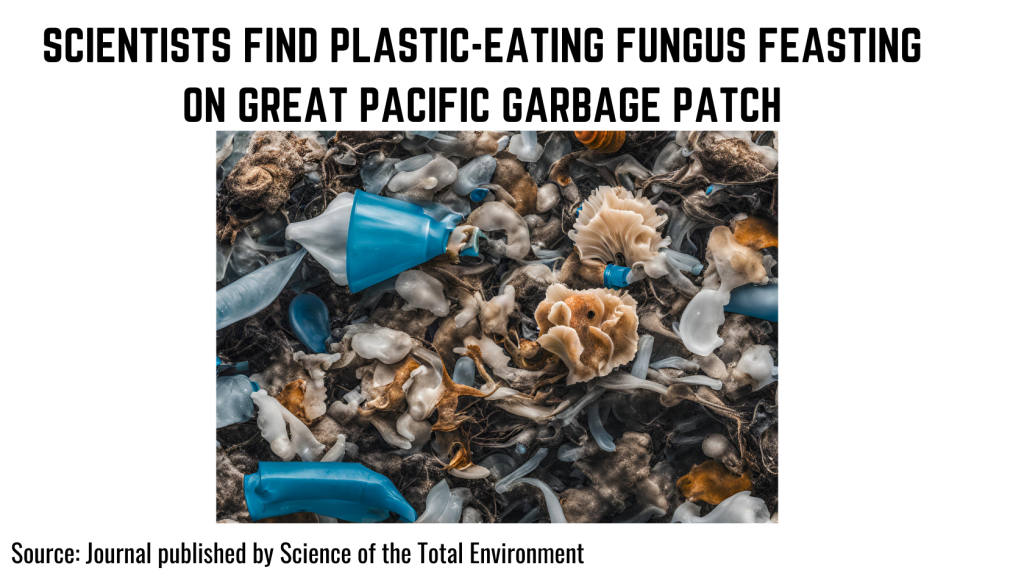By Staff Reporter | The nation may see the benefits of hydropower expansion in Arizona, depending on President Joe Biden’s…
A number of the economic policies I propose cannot work math-wise unless we actually fight for renewable energy resources, such as wind, solar, hydrogen, nuclear, and geothermal power.
By optimizing and incentivizing renewable energy efforts, circularity can be introduced into the American economy, creating new manufacturing sectors, putting less pressure on supporting infrastructure, and playing a complementary role in the broader portfolio of strategies to reduce greenhouse gas emissions.
In terms of carbon reuse, Section 45Q of the tax code is the foundational tax credit used to help make carbon management projects economical. Under the current statute, there is a $25 per ton disparity
between those projects that reuse carbon emissions versus those that securely and permanently store the captured carbon. This disparity effectively disincentivizes the development and deployment of relatively nascent carbon reuse technologies, essentially acting similarly to a new tax on such operations.
Arizona has been a leader in creating more types of affordable, reliable power without “one size fits all” mandates from Washington, D.C. The desert southwest is a unique part of the country, which is why I believe that Washington must embrace a sound “all of the above” energy solution and take this approach to factories, power plants, and businesses across the country.
Not only should we optimize the use of our traditional energy reserves, but we also should continue to expand into renewable energy resources such as wind, solar, hydrogen, nuclear and geothermal power. We are seeing many different disruptive technologies and zero-emission facilities in production that we should be supporting across the United States. These are all vital to cleaning our environment, as well as the economic welfare and national security of the United States.
The government must stop picking winners and losers in the industry. Each of these sources must stand on their own in the marketplace, without government-sponsored interference. More cities and towns within Congressional District 1 and around Arizona are changing their practices to better use the resources available in a long-lasting, renewable fashion– there’s a chance for real change.
Some of the new technology that I have been focusing on includes battery storage, micro-grid development, and direct air capture, and carbon capture and storage. These are just a few examples of 21st century technology that Arizona is not only leading the way in R&D, but also actual implementation, without oppressive regulatory burdens and mandates. The free market has led to an incredible growth in technologies that has led America to become a net-exporter of energy for the first time in our history, while also reducing our greenhouse gas emissions. As pro-growth, market-based solutions have led to exciting new techniques in soil health, water sustainability for our desert region, and agricultural research that reduces land-use while increasing crop yields, allowing us to feed our ever-growing planet, I will continue to work with my colleagues to identify new sources of power that will lower our families’ monthly bills and allow our economy to grow.
I have spoken on the House floor about the different types of environmental technology being produced. To watch floor speeches on energy and environment, click here.





H.R.1262, the CCU Parity Act of 2023
This bill increases the tax credit for carbon capture and use to match incentives for carbon capture and sequestration for both direct air capture and the power and industrial sectors.
The rising carbon emissions from industrial activities in our nation poses significant environmental and economic concerns. These problems can be mitigated through the use of carbon capture technology; however, these practices create many financial barriers to businesses seeking to implement them.
We are seeing many different disruptive technologies and zero-emission facilities in production that we should be supporting across the United States. We must invest in these technologies that will protect our environment, economic welfare, and national security, and incentivize efforts to promote the reduction of carbon emissions into our atmosphere.
For this reason, I introduced the Captured Carbon Utilization (CCU) Parity Act, which if enacted, would increase the tax credit for carbon capture and utilization to match the incentives for carbon capture and sequestration for both direct air capture and the power and industrial sectors. Further, it would establish parity between 45Q carbon capture tax credits for utilization and sequestration and support using captured carbon in the manufacturing of products to lower the emission intensity of production.
H.R.4353, the Uranium Seawater Extraction Research and Development Act
This bill requires the Department of Energy (DOE) to support research and development of technology for the extraction of uranium from seawater. In addition, DOE must conduct demonstrations of such technology in order to further performance enhancement and reduce costs.
H.R.4336, the NEPA State Assignment Expansion Act
This bill allows certain states to enter into agreements with federal agencies to assume federal responsibilities regarding the environmental review of proposed major federal actions under the National Environmental Policy Act of 1969.
H.R.4335, NEPA Accountability and Enforcement Act
This bills establishes (1) deadlines for federal agencies to complete reviews of the environmental effects of proposed major federal actions, and (2) penalties for agencies that do not comply with these deadlines.
H.R.283, the Crowd Sourcing of Environmental Data Act of 2021
This bill authorizes states to monitor certain criteria air pollutants (i.e., lead, ozone, particulate matter, or sulfur dioxide) by greatly increasing the number of air quality sensors under their state implementation plans.
The Environmental Protection Agency (1) may not enforce a requirement concerning the method of monitoring if the derived data meets quality standards, and (2) must allow states to consider data derived from such methods when determining whether national ambient air quality standards for criteria air pollutants were exceeded.
H.R.4012, the Secret Science Reform Act of 2014
Secret Science Reform Act of 2014 – Amends the Environmental Research, Development, and Demonstration Authorization Act of 1978 to prohibit the Environmental Protection Agency (EPA) from proposing, finalizing, or disseminating a covered action unless all scientific and technical information relied on to support such action is specifically identified and publicly available online in a manner sufficient for independent analysis and substantial reproduction of research results. Includes as a covered action a risk, exposure, or hazard assessment, criteria document, standard, limitation, regulation, regulatory impact analysis, or guidance.
H.R.3885, To amend the Energy Act of 2020 to include copper as a critical mineral, and for other purposes.
This bill expands the definition of critical mineral under the Energy Act of 2020 to include copper. Thus, this bill requires the Department of Energy and other agencies to conduct a variety of efforts to ensure a secure and reliable supply chain of copper.
H.R.3514, the Domestic USA Act
This bill includes uranium on the critical minerals list. In 2018, the U.S. Geological Survey (USGS) published a list of critical minerals, including uranium, in response to an executive order that called for a federal strategy to ensure secure and reliable supplies of critical minerals. The USGS updates the list every three years and includes certain minerals that are essential to economic or national security and have a supply chain vulnerable to disruption. In 2022, USGS removed uranium from the list. The bill reinstates uranium as a critical mineral.


